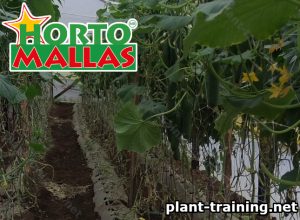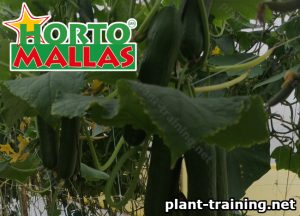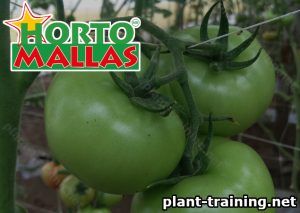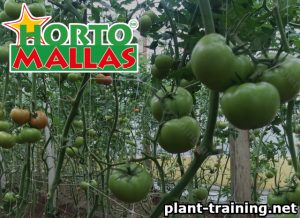Plant Training (training tomatoes, training cucumbers, trellis netting)
There are a number of ways to increase the yield of the plants and plant training is one of the easiest ones to achieve this goal. There are cases in which the increased yields by up to 40 percent are seen. The method of plant training involves the manipulation of plants physically in order to increase the number of bud sites hence resulting in the increase in yields. This method of plant growing is mostly used in areas where there is limited land for vegetation like cities and other urbanized areas. The plant grows naturally and upon training the efficiency to use sunlight increases by significant amounts. The main idea behind plant training is to take the advantage of grow lights as much as possible to increase the net yield. There are various modes of plant training like Low Stress Training, No-technique Training, Super cropping, Screen of Green, Pruning, Topping, Fiming, Mani folding, defoliation, etc.

The best and easiest way to keep tomatoes healthy and trim is by training them using sports and by pruning the taller ones during the season of growing. A stake, cage or trellis keeps the fruit to stay off the soil and the air is allowed to circulate throughout the plant surrounding. Tomato training isn’t a difficult task if started at very initial stages of plantation. Delaying the training process more than a month isn’t recommended due to various reasons. As the tomato plant grows it is required to tie it to the support at every 6-8inches gap. Tomato plant has weak stem and is vulnerable to get easily damaged so one should loosely tie them. So use of fabric, plant tape, old pantyhose, etc. may be used to tie the stem. Preference should be given to tie at a location just above the flower cluster to avoid plant getting crimped. The stem while growing will sprout the side stems called suckers. Pruning should be done to maintain a single stem. 2-3 primary suckers should be allowed to grow and the rest should be pruned. Pruning can simply be done using hands at the spot just above the joint. Supported system for culturing are generally important for tomato production organically to minimize the diseases and rotting in the fruits. However, the training cost and maintenance is high but the increased air circulation, efficient water availability and other factors pays off in the end by increasing the yield of the fruit. These modes of training are more important and significant in humid areas where the tomatoes are more vulnerable to diseases.

An average healthy cucumber plant can produce almost 15 small cukes and 10 large ones in one harvesting period which is almost 3weeks. It is reported that cucumbers by growing with single main stem are more effective fruit producers than multi stem ones. Moreover, the strings, cane and vertical stakes add to the yield of the cucumbers. The process in which all these things are considered and applied is called as the training of cucumbers. It is an easy process to train and maintain the cucumbers at the site of choosing and the growth and yield can be increased significantly. There are various steps involved in the training procedure of cucumbers which we will be discussing in the following section. Pots or growing bags should be used to plant cucumbers in a greenhouse. If not available these can simply be planted in a garden. The second step involves the placement of stakes vertically between bags and extend to the top of green house or to a few feet in open. Then the horizontal wires are to be placed at the top along the rows. The cucumbers are to be trained by tying them as they grow and the fruit shall hang down the stakes. However, if the cucumber is growing in a garden or other open area vertical stakes are to be inserted in the ground between cucumber plants. Horizontal ties are to be used to keep them attached to the stakes. Then these stakes are to be connected at the top using horizontal wires and the proper supporting conditions should be provided. The training of the plant as it grows should be monitored. Pinching all the flowers, sides shows and tendrils for facilitating the growth should be adopted until it reaches the top horizontal strings.

Trellis netting is used to withstand vertically layered covers of a plant and are one of the most efficient supporting structures for comparatively weak plants like corn, tomatoes, cucumbers, melons, beans, peppers, peas and other climbing plants. The use of trellis netting eliminates the need of heavily welded meshes of wire. This also reduce the cost by significant amount hence providing lateral cost-effective support. These can also be used horizontally to support long stemmed plants like gladioli and carnations. These are made of polypropylene and hence are light in weight and strong. These are also manufactured using various grading of carbon which makes them UV stabilized. Other advantage of using trellis netting is the increased air circulation, exposure to sunlight, and also increased space which collectively increase the effectiveness and yield of the required product. These nettings are resistant to chemical actions, bacteria and mold which makes them a much required product of effective plantation of climbers. The various types of trellis netting are A-Frame Chicken Wire Netting, Twine and bamboo trellis, Hog Panel and T-Post, Twine and T-Post, Twine, etc.
